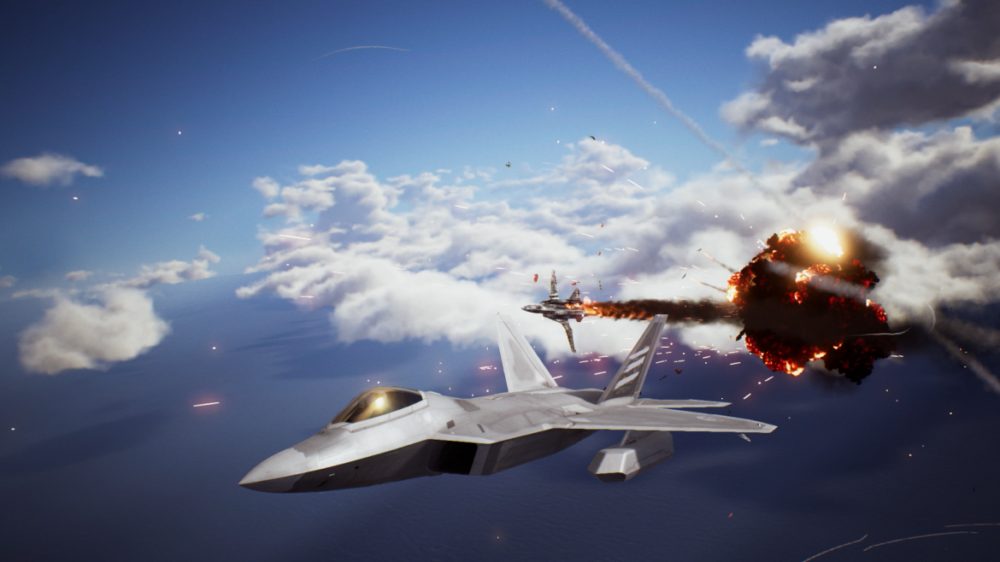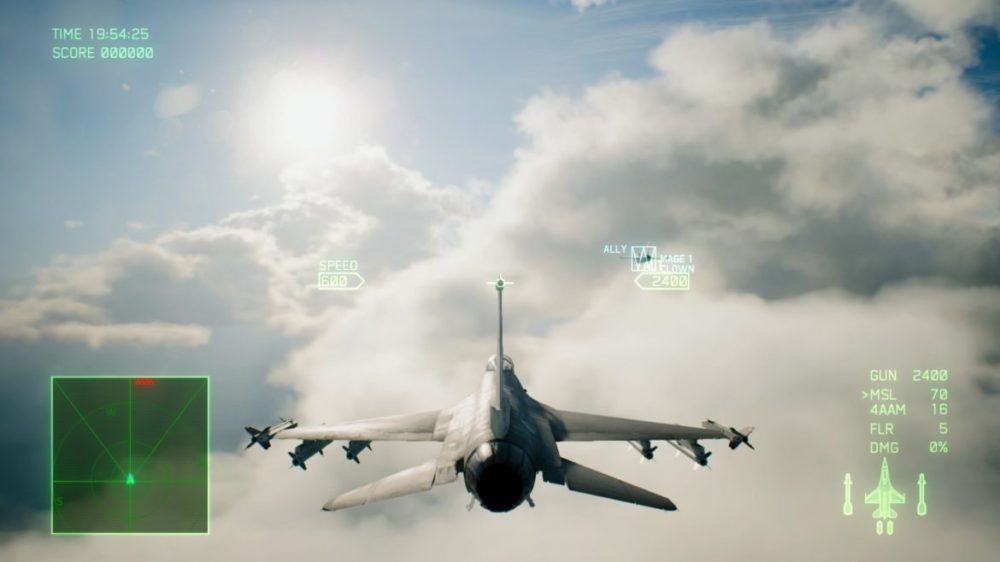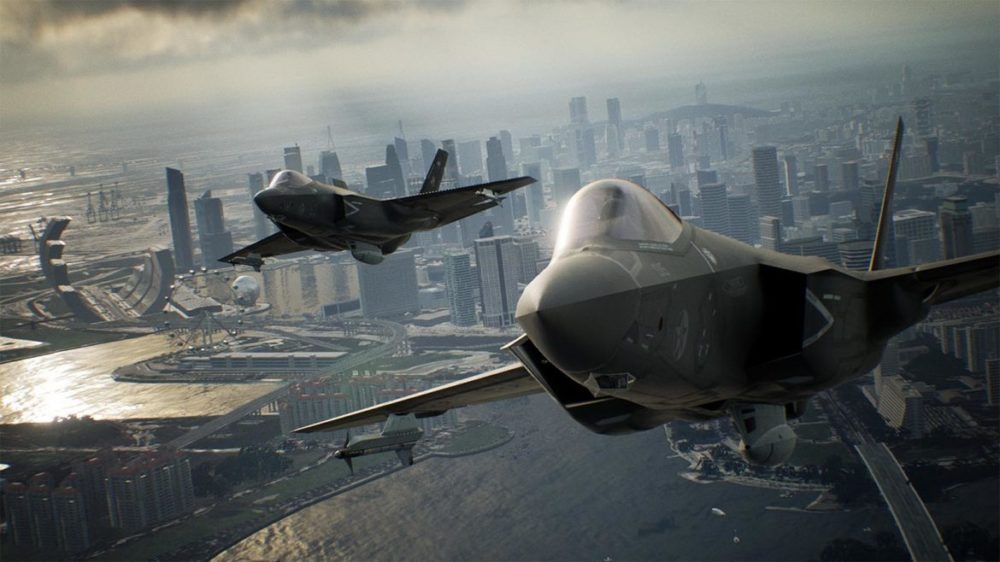TL;DR
Ace Combat 7: Skies Unknown is back, aiming to recapture the series' glory days with a compelling story, stunning visuals, and a cinematic soundtrack. Built on Unreal Engine 4, it offers a balanced blend of arcade action and flight sim elements, featuring diverse missions, dynamic weather, and a hangar full of aircraft. While visually impressive and immersive, especially with VR support, console performance can be inconsistent, with frame rate drops on Xbox One X and lower resolutions on base models. For PC players or those with PS4 Pro/Xbox One X, it's a strong contender for flight-action fans, but hardware limitations are noticeable on older consoles. Dive into this epic aerial warfare experience and see if it soars for you!
Ace Combat 7: Skies Unknown shares a certain kinship with another (Bandai)Namco title, Tekken 7. While Ace Combat hasn’t achieved the same widespread recognition as Tekken, it has cultivated a dedicated following, particularly in Japan. Similar to Tekken, the Ace Combat series experienced its peak during the PlayStation 2 era, with the third and potentially fourth installments often considered high points. Subsequent releases on the PlayStation 3 struggled to reach similar levels of engagement, contributing to a period of relative obscurity.
Now, the series returns, and for the first time, expands its availability beyond Sony PlayStation (4), with releases on PC and Xbox One. Echoing Tekken 7‘s development, Namco has transitioned from its proprietary graphics engine to Unreal Engine 4, yielding both advantages and limitations. Ace Combat 7 aims to recapture the essence of the series’ most successful entries, prioritizing compelling storytelling and immersion. The result is a visually impressive game, arguably the best-looking in the series to date, accompanied by a cinematic soundtrack. However, the console versions present some performance inconsistencies.
Ace Combat 7 presents a sophisticated narrative centered around a modern global conflict unfolding within fictionalized versions of real-world countries and military alliances. Players assume the role of a fighter pilot, piloting a range of aircraft, from the F-14 and the Swedish Gripen, to the advanced F-22 Raptor and several futuristic prototypes. Unlocking new aircraft and weaponry is tied to mission completion, with successful sorties rewarding players with points convertible into in-game currency. Ace Combat 7 effectively balances elements of flight simulation with arcade-style action. While the flight simulator genre has diminished in prominence, with titles like Microsoft Flight Simulator serving as notable examples, Ace Combat 7 distinguishes itself from pure arcade experiences like Afterburner. It offers players a tangible sense of control and an intuitive understanding of basic flight physics.
The mission design and variety are noteworthy, encompassing aerial dogfights, ground target strikes, boss encounters, and even stealth-based sections requiring pilots to evade radar and spotlights. Weather effects and cloud cover enhance immersion and dynamically impact gameplay by affecting visibility and providing concealment. The game demonstrates a commendable level of polish and balance, maintaining accessibility for newcomers while offering depth for experienced players.
The game’s presentation is initially striking. The environments are diverse, featuring dynamic time-of-day transitions, varied terrain, expansive landscapes, urban environments, and realistic weather and water effects. The Unreal Engine effectively delivers a visually impressive Ace Combat experience, capitalizing on new hardware capabilities. However, the engine’s limitations are also apparent. Testing on the Xbox One X revealed minor graphical imperfections and a lack of sharpness in distant details. The Unreal Engine 4’s anti-aliasing capabilities prove inadequate, and the resolution is capped at 1080p (Full HD), consistent with the PS4 Pro version. The Xbox One X possesses the potential for higher resolutions, such as dynamically scaled 1440p or even 2160p, which would yield a noticeable improvement, although potentially at the expense of frame rate. Ace Combat 7 generally maintains a smooth frame rate of approximately 60 frames per second on the PS4 Pro, but the Xbox One X exhibits occasional frame drops, particularly during graphically demanding scenes. This inconsistency, despite the Xbox One X’s superior hardware, remains unexplained. These occasional frame drops, while not catastrophic, detract from the overall experience. The base PS4 hardware maintains a frame rate of 45-50 frames per second, while the Xbox One S experiences more significant performance dips, occasionally dropping to 30-45 frames per second. Furthermore, the base hardware renders the game at a lower 720p resolution. This highlights the increasing need for a new generation of console hardware. As is often the case, the PC version offers the highest fidelity, supporting true 4K resolution for users with capable hardware.
Owners of PlayStation VR can access three VR-exclusive missions. Experiencing flight in VR, with unrestricted head tracking, provides an immersive, almost visceral sensation. For those with both PSVR and PS4 Pro, the PS4 version of Ace Combat 7 is the recommended choice.
The soundtrack deserves particular recognition. Initially, Keiki Kobayashi’s compositions may seem overly bombastic, evoking stereotypical Hollywood portrayals of flight. However, the masterfully crafted and dynamically adaptive score soon proves its worth, elevating the in-game action with truly epic musical moments. The spoiler-free playlist is available on Youtube:
Expectations for Ace Combat 7 were reasonably high, given the mixed reception of previous installments. The game proves to be a compelling and engaging experience, offering a balance of challenge and accessibility. The depth of customization and online multiplayer options provide considerable replayability. While performance on base console hardware is a drawback, owners of modern PCs, Xbox One X, or PS4 Pro systems who appreciate well-balanced flight action will find Ace Combat 7 to be a worthwhile purchase.




